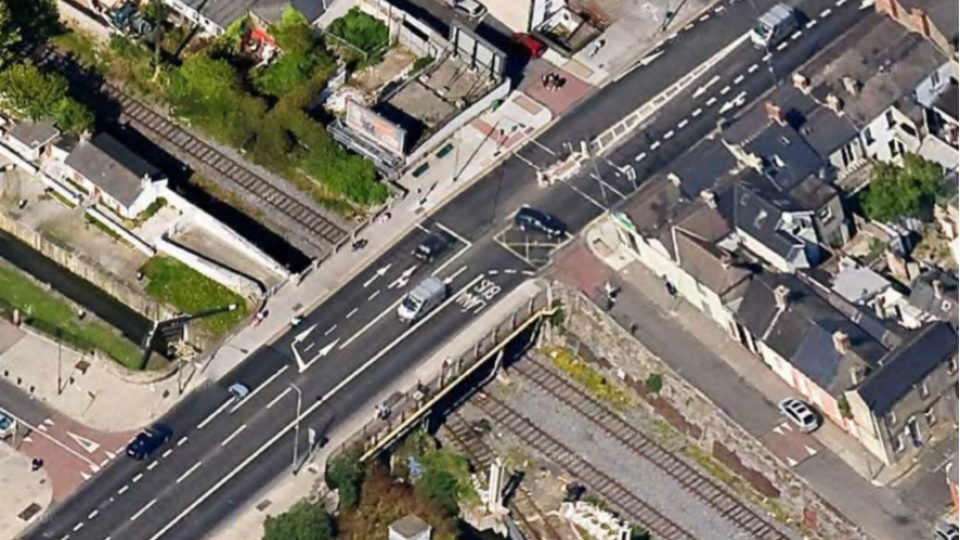Clontarf-City Centre Cycle Route - Dublin Cycling Campaign Position
There has been great controversy over the proposed cycle route design from Clontarf to Amiens Street. This piece outlines Dublin Cycling Campaign’s involvement in the process and our present position.
Brief History/Context
The Clontarf to City Centre cycle route has consistently been among the busiest bike commuter routes, since counts were initiated. It is earmarked as Primary Route 1 in the Greater Dublin Area Cycle Network Plan, which indicates its importance.
A portion of this route is also earmarked as part of the iconic Sutton to Sandycove (S2S) coastal route, which will be a major leisure cycling and family cycling route as well.
Dublin Cycling Campaign was cited as a stakeholder on the published design, but was not consulted before the scheme was publicly exhibited.
A two-way cycle route was proposed in the original Route Options Report of 2012. The next Route Options Report, in 2015, rejected a two-way segregated cycle route and proposed a one-way route on each side of the road. Dublin Cycling Campaign was unhappy with the proposed design as it failed to segregate bicycles and buses at bus stops and failed to provide for safe junction design. We reached the view that the best way to provide for safe cycle facilities was to revert to the two-way proposal, and we based much of our detailed submission on this issue.
Following the Part 8 public consultation process, subsequent meetings were held between the City Officials and Dublin Cycling Campaign and also local communities and representatives. Some amendments to the Part 8 design were proposed as a result, mainly the saving of trees in Fairview which were previously earmarked to be felled, but the core concerns of Dublin Cycling Campaign were not addressed.
A Report on the Part 8 consultation, maintaining one-way cycle routes and off-line bus stops, but saving most of the Fairview trees, and with other minor changes, was put before the full City Council in early September, and a decision deferred. If no scheme was agreed within 6 weeks of that deferral the scheme would have fallen and not been built.
Subsequently Dublin Cycling Campaign, in the interests of ensuring a viable cycle scheme went ahead along this important route, and recognising that a strong majority in the City Council wish to move ahead with improvements to cycling facilities on this vital route, proposed amendments to the design. This was to ensure it would be in line with both the Design Manual for Urban Roads and Streets ( DMURS ) and the National Cycle Manual (NCM). Here below is the wording of the amendments:
*- The locations of bus stops shall be examined and all bus stops along the route shall be redesigned to segregate buses and bicycles as recommended by the National Cycle Manual.
- The junctions and traffic signalling on the route shall be designed
a) to provide for pedestrians in line with DMURS and
b) to provide for full segregation of bicycles and motor vehicles.
- The widths of cycle facilities and buffers are to be in line with the specifications in the NCM. If there are pinch points where this is not possible, such locations are to be subject to special design consideration and a safety audit.*
These amendments were tabled by Councillors Ciaran Cuffe and Andrew Montague at the October full City Council meeting, and were agreed.
What Next?
- A detailed design process is about to begin, with a nominated transport consultant, under the auspices of the City Council.
- Dublin Cycling Campaign has been guaranteed full stakeholder rights in this detailed design process, and we aim to ensure that the route fully meets the needs of cyclists and pedestrians.
- The design must provide a safe and comfortable route for the existing large number of cyclists that currently use the route, as well as for the future growth in numbers of people who choose to cycle.
- Dublin Cycling Campaign will keep its members and supporters fully informed of progress in this design process.
- The City Council has promised full involvement by Dublin Cycling Campaign in the detailed design, and Dublin Cycling Campaign is confident in the Council response, to ensure a fully acceptable scheme ensues.
Conclusion
While we in Dublin Cycling Campaign are disappointed with the process so far, we are sure that it has left no doubt in the City Council’s mind of the necessity for a root and branch review of the proposed design for the route, to ensure a viable and sustainable route emerges from the final stage of the process. We are confident that the decision of the City Council to amend the scheme means that a safe, good quality cycle route can result from the detailed design process. We will be engaging with the Council and their consultants to ensure that this is the case.
Help us do more for cycling in Dublin by becoming a member!

